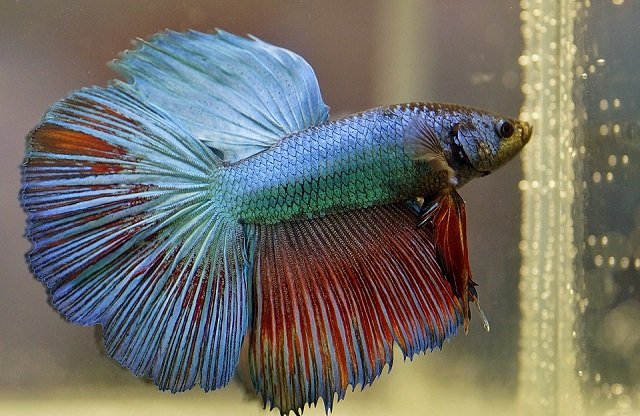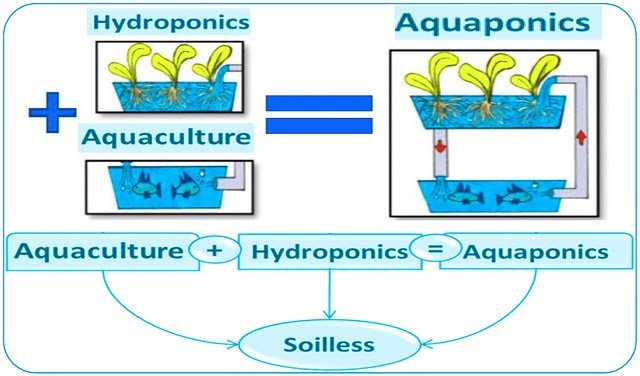
Tilapia (Oreochromis spp.) has established itself as one of the most important farmed fish globally. Since the introduction of various species such as Mozambique, red, Nile, and blue tilapia in the 1960s, continuous efforts in artificial selection and crossbreeding have generated new varieties with desirable characteristics like rapid growth and greater disease resistance. However, the early sexual maturity and short culture cycles of tilapia have facilitated interspecific hybridization and genetic mixing, which can compromise the quality of genetic resources and hinder the sustainable development of this industry.
To address these challenges, it is crucial to analyze the genetic diversity among different breeding populations and to establish precise methods for identifying broodstock. A recent study published in the International Journal of Molecular Sciences by scientists from Nanjing Agricultural University and the Chinese Academy of Fishery Sciences delves into the genetic structure, selection signatures, and the development of single nucleotide polymorphism (SNP)-based “fingerprints” for blue tilapia (Oreochromis aureus), Nile tilapia (Oreochromis niloticus), and red tilapia (Oreochromis spp.). These findings are fundamental for the conservation, utilization, and improvement of tilapia genetic resources.
Understanding the protagonists: The tilapias under study
- 1 Understanding the protagonists: The tilapias under study
- 2 How was their genome investigated? The power of resequencing
- 3 Revealing genetic diversity: How different are they?
- 4 Population structure and kinship: A genetic family tree
- 5 Under the lens of selection: What genes make the difference?
- 6 A genetic “fingerprint” for tilapia: Towards precise identification
- 7 Implications for tilapia aquaculture
- 8 Conclusion
- 9 Entradas relacionadas:
The research focused on three highly relevant tilapia populations maintained at the Freshwater Fisheries Research Center in China:
- Blue tilapia (OA): Introduced from Egypt in 2004, this population has been selected for 20 consecutive generations, aiming to improve growth rate and resistance. It is crucial in the production of “all-male” tilapia through crosses with Nile tilapia.
- Nile tilapia (ON): Recently introduced from Senegal in 2023, this wild population has not undergone prior genetic selection at the research center. It is the main tilapia species cultivated in China and a cornerstone for broodstock improvement due to its good performance and environmental tolerance.
- Red tilapia (OS): Introduced from Taiwan in 2010, this tilapia is obtained from crossing red Mozambique tilapia mutants with other species, including Nile tilapia. It has been selected for 10 generations focusing on body color and weight, showing excellent breeding potential due to its attractive color, flavor, and salinity tolerance.
How was their genome investigated? The power of resequencing
To unravel the genetic secrets of these tilapias, researchers used the whole-genome resequencing (WGR) technique on 45 individuals (15 from each population). This technology allows for reading the complete DNA sequence of each fish and comparing it to a reference genome. By doing this, genetic variations can be identified, especially Single Nucleotide Polymorphisms (SNPs). SNPs are changes in a single “letter” of the genetic code and are extremely useful as molecular markers due to their abundance, stability, and ease of automated analysis.
Revealing genetic diversity: How different are they?
The study shed light on the genetic variability within and between populations:
- Red tilapia (OS) is the most diverse: It presented the highest observed and expected heterozygosity, as well as the highest nucleotide diversity (Pi). Despite selection, its hybrid origin seems to contribute to this high genetic diversity. However, it also showed a higher inbreeding coefficient, suggesting a certain degree of inbreeding that needs to be managed in future breeding programs.
- Blue tilapia (OA) shows lower diversity: This population, intensively selected for 20 generations, had the lowest values of heterozygosity and nucleotide diversity. This suggests that continuous directional selection has reduced its genetic variability, a phenomenon also observed in other aquaculture species subjected to domestication. Interestingly, it presented the highest homozygosity, which could be favorable for fixing desired traits like growth.
- Genetic differentiation: Significant genetic differentiation was found between the blue tilapia (OA) population and the Nile tilapia (ON) and red tilapia (OS) populations. In contrast, the differentiation between Nile tilapia (ON) and red tilapia (OS) was considerably lower, indicating a closer genetic relationship.
Population structure and kinship: A genetic family tree
Principal component analysis (PCA), phylogenetic, and genetic clustering (admixture) analyses revealed clear patterns:
- Three distinct groups: The three populations formed differentiated genetic clusters, reflecting their particularities.
- Closeness between Nile and red tilapia: The genetic structure of Nile tilapia (ON) was more similar to that of red tilapia (OS) than to blue tilapia (OA). Kinship analyses confirmed a closer relationship between the ON and OS populations, and the admixture analysis suggested a possible common ancestral origin for both when two optimal groups (K=2) were considered.
- Gene flow: Despite differentiation, evidence of genetic drift from the blue tilapia (OA) population to the red tilapia (OS) population was detected, indicating that there has been an introduction of genetic material from blue tilapia into red tilapia.
Under the lens of selection: What genes make the difference?
The study not only described diversity but also sought to identify regions of the genome that have been shaped by natural or artificial selection during breeding programs. The scientists found selected regions harboring key genes related to:
Stay Always Informed
Join our communities to instantly receive the most important news, reports, and analysis from the aquaculture industry.
- Metabolism, endocrine, and immune systems: These systems are crucial for the good performance of fish.
- Traits of productive importance: Many of the identified genes are linked to growth, reproduction, and disease resistance, indicating that breeding programs have been, consciously or unconsciously, selecting for these characteristics.
- Specific candidate genes: In comparisons involving blue tilapia (OA vs. ON and OA vs. OS), genes like qrsll (related to glutamyl-tRNAGln biosynthesis, oocyte development, and hypoxia response) and pde4d (involved in modulating inflammatory response, growth, and fertility) were highlighted in metabolic pathways. In the comparison between Nile and red tilapia (ON vs. OS), numerous candidate genes were identified. Among them, hras (mediator of cell survival signals), ikbkb (key in activating immune response and apoptosis), prkag1, prkaa2, prkacb (subunits of AMP-activated kinase, crucial in energy metabolism), irs2 (regulation of growth hormones), and eif4e2 (regulation of protein translation) were identified as central in longevity, endocrine system, and immune system pathways. This suggests significant differences in selective adaptation between these two populations in these functional areas.
A genetic “fingerprint” for tilapia: Towards precise identification
One of the most practical outcomes of the study is the construction of SNP fingerprints. Identifying juvenile tilapia can be complicated due to the lack of stable morphological characteristics, and the appearance of fish can change with environmental conditions. SNP fingerprints offer a genomic-level solution.
- Successful construction: Researchers successfully constructed SNP-based genetic fingerprint profiles for the 45 individual samples, allowing differentiation of the three populations.
- Validation and core markers: From an initial set of SNPs, five core SNP markers (SNP1, SNP3, SNP5, SNP6, and SNP7) were selected and validated (via Sanger sequencing) and proved robust for identification. SNP2 and SNP4 markers showed variations that did not allow for clear distinction and were discarded for this purpose.
- Combinations for identification: Two combinations of these five SNP markers were developed that, through a two-step process, accurately identify whether an individual belongs to the blue tilapia, Nile tilapia, or red tilapia population. For example, one combination uses SNP1, SNP5, SNP6, and SNP7 to first identify blue tilapia; then, SNP3 distinguishes between Nile and red tilapia.
Implications for tilapia aquaculture
The findings of this study have significant and direct implications for the aquaculture sector:
- Improvement of breeding programs: Detailed knowledge of genetic diversity and regions under selection can guide more efficient crossbreeding strategies, helping to select broodstock with superior genetic characteristics and maintain long-term genetic diversity.
- Precise stock identification: The developed SNP fingerprints provide a powerful and accurate tool for identifying broodstock and preventing unwanted stock mixing, ensuring the genetic purity of breeding lines. This is especially valuable given the ease of hybridization in tilapia.
- Conservation of genetic resources: Understanding the genetic structure of populations is fundamental for designing effective conservation strategies, especially for wild populations or those with unique genetic characteristics.
Although the authors point out limitations such as the sample size for the initial SNP screening and sequencing depth, which could be improved in future studies to increase robustness, this research represents a significant advancement.
Conclusion
This study provides a detailed and high-precision view of the genetic differences among three key tilapia populations in China. It has been confirmed that red tilapia possesses the highest genetic diversity, while blue tilapia has the lowest, likely due to intensive selection. The three populations show clear genetic segregation, with a closer relationship between Nile and red tilapia.
More importantly, the identification of genes associated with productive traits and the development of SNP fingerprints for the precise identification of these populations are highly valuable tools. These results not only enrich our knowledge of tilapia genetic resources but also offer crucial reference data for future genetic improvement programs and for the effective management of stocks in the growing tilapia aquaculture industry.
The study was funded by the Central Public-interest Scientific Institution Basal Research Fund, CAFS, the Project of National Key R&D Program of China, and the Science and Technology Innovation 2030-Major Project.
Reference (open access)
Hua, J., Tao, Y., Lu, S., Wang, Q., Sun, H., Dong, Y., & Qiang, J. (2025). Genetic Structure, Selective Signatures, and Single Nucleotide Polymorphism Fingerprints of Blue Tilapia (Oreochromis aureus), Nile Tilapia Oreochromis niloticus), and Red Tilapia (Oreochromis spp.), as Determined by Whole-Genome Resequencing. International Journal of Molecular Sciences, 26(10), 4910. https://doi.org/10.3390/ijms26104910
Editor at the digital magazine AquaHoy. He holds a degree in Aquaculture Biology from the National University of Santa (UNS) and a Master’s degree in Science and Innovation Management from the Polytechnic University of Valencia, with postgraduate diplomas in Business Innovation and Innovation Management. He possesses extensive experience in the aquaculture and fisheries sector, having led the Fisheries Innovation Unit of the National Program for Innovation in Fisheries and Aquaculture (PNIPA). He has served as a senior consultant in technology watch, an innovation project formulator and advisor, and a lecturer at UNS. He is a member of the Peruvian College of Biologists and was recognized by the World Aquaculture Society (WAS) in 2016 for his contribution to aquaculture.




